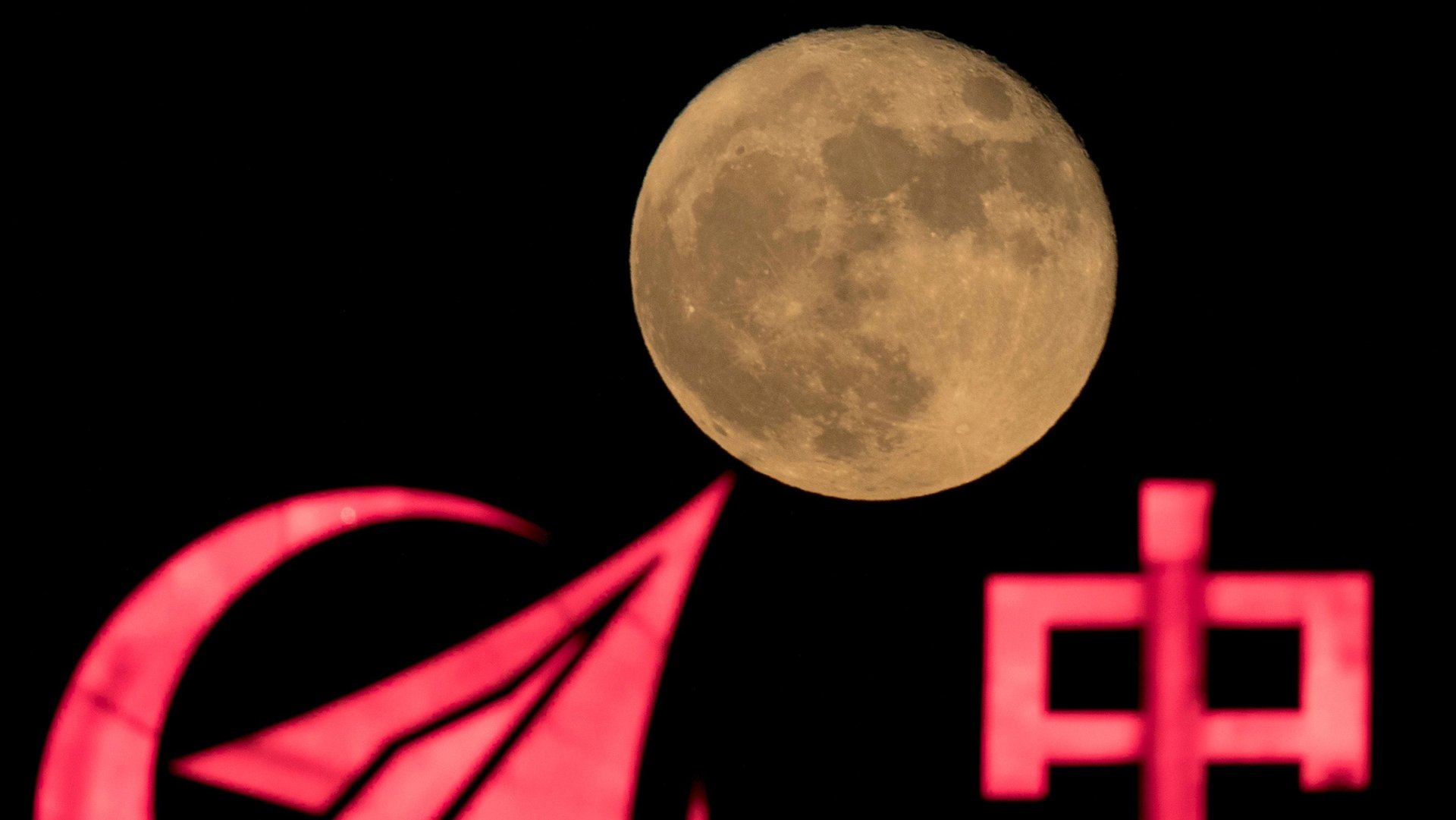A guide to the logos on China’s lunar far side mission
China’s trying to make history by becoming the first to land a spacecraft safely on the Moon’s far side early in the new year. If it gets there safely, investigative tools contributed by several countries will help it study the Moon’s hidden side.


China’s trying to make history by becoming the first to land a spacecraft safely on the Moon’s far side early in the new year. If it gets there safely, investigative tools contributed by several countries will help it study the Moon’s hidden side.
China acknowledged those efforts on the rocket that helped send Chang’e-4 spacecraft to space, stamping it with the logos of the organizations that developed equipment on board the Chang’e-4 and Queqiao, the relay satellite that will help the rover communicate with Earth. China is barred from the International Space Station or cooperation with NASA by the US over security concerns, and collaborating with China requires countries to be careful of not falling afoul of US export controls on sensitive technology.
China launched the Chang’e-4 spacecraft, which consists of a lander and rover, with the Long March 3B rocket from Xichang Satellite Launch Center in southwestern Sichuan province on Saturday (Dec. 8) at 2:23 am (link in Chinese) Beijing time.
Chang’e-4 will attempt to land in the moon’s South Pole-Aitken basin in 26 days (link in Chinese), according to a blog post (link in Chinese) from China Aerospace Science and Technology, the state-owned firm that made the spacecraft. It’s a challenging endeavor to land on a part of the Moon with which communications are difficult, given that it always faces away from the earth due to a phenomenon known as the “tidal locking.” It is also more heavily cratered than the near side.
Here are the countries China gave shout-outs to on the nose cone used to protect the Chang’e-4. (China’s National Space Agency’s logo is the one represented by the blue rocket-like triangle surrounded by ears of grains, the same element used on China’s national emblem, to symbolize China’s peasants.)
Netherlands Space Office

On the relay satellite, Scientists from Netherland’s Radboud University led the design for a radio antenna, which traveled with the Queqiao earlier. Scientists are hoping that the antenna will pick up signals that can reveal the clues of the universe’s origins, which are hard to catch on earth due to interference.
German Aerospace Center (DLR)

Its logo looks a little like two rectangles crossing each other–or wings—possibly to represent flight. German scientists at the University of Kiel helped develop the Lunar Lander Neutrons and Dosimetry, which will measure the moon’s radiation levels, among other experiments, Robert F. Wimmer-Schweingruber, director of the Institute of Experimental and Applied Physics at the University of Kiel, told Quartz the collaboration came about after a 2015 workshop organized by German aerospace firm OHB. “Our idea was seen favorably by the Chinese selection committee, and we were selected to build a radiation monitor, LND, in January 2016,” said Wimmer-Schweingruber.
King Abdulaziz City for Science and Technology (KACST)

Saudi Arabia’s scientists built photographic instruments to film and photograph the moon, which are on board a small satellite that launched at the same time as the relay satellite.
Apart from the nations mentioned above, Chang’e-4 is also equipped with a Swedish-made detector, the Advanced Small Analyzer for Neutrals, which can investigate how solar wind interacts with the lunar surface, according to Dr. Martin Wieser from the Swedish Institute of Space Physics, which developed the detector. (It’s not possible to tell if the institute’s symbol is on the rocket, judging from the picture posted by state media.)
After Chang’e-4, China has more ambitious plans for moon exploration—as the Chang’e program’s own logo hints.
The logo’s overall shape seems to reference “月,” the contemporary Chinese character for moon, and also resembles a crescent moon, noted Andrew Jones, who writes about China’s space program for news site GBTimes and others.
The top of the curving stroke is a dragon’s head, to symbolize that China’s aerospace development is “taking off like a giant dragon,” according to the government’s interpretation (link in Chinese) in 2006, when the logo was selected among more than 1,000 designs the government crowdsourced from the country. The bottom of the pattern is a flock of doves to represent “our good wishes for the peaceful use of space.”
The grey marks within the curve are footprints, which represent China’s “ultimate dream” of being the second country to put its people on the moon.